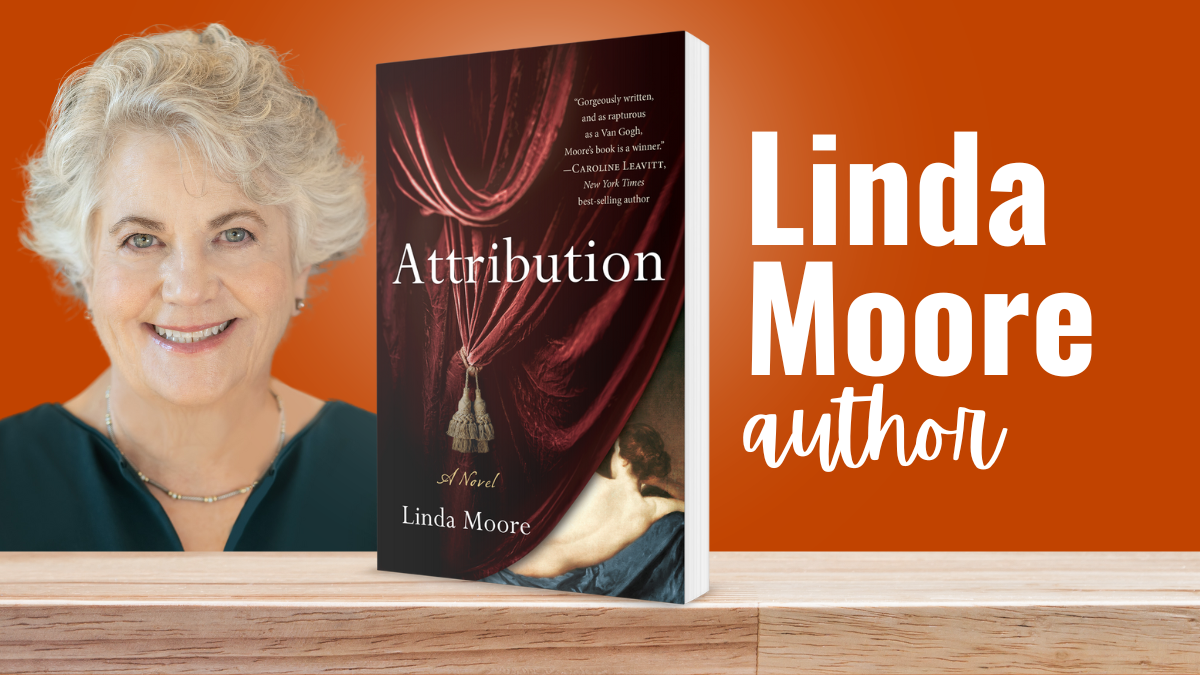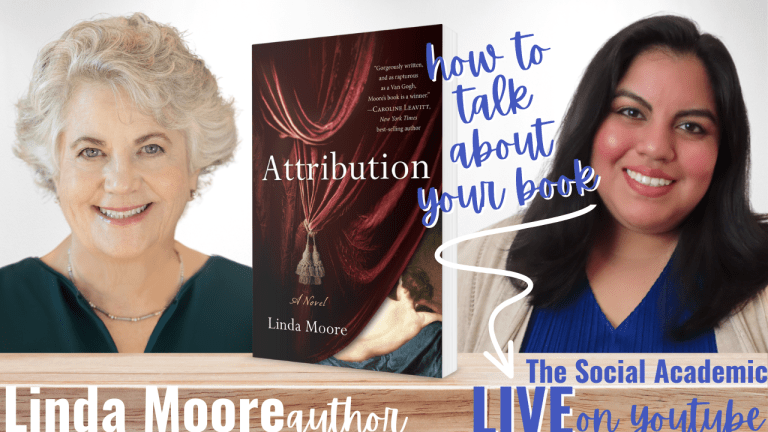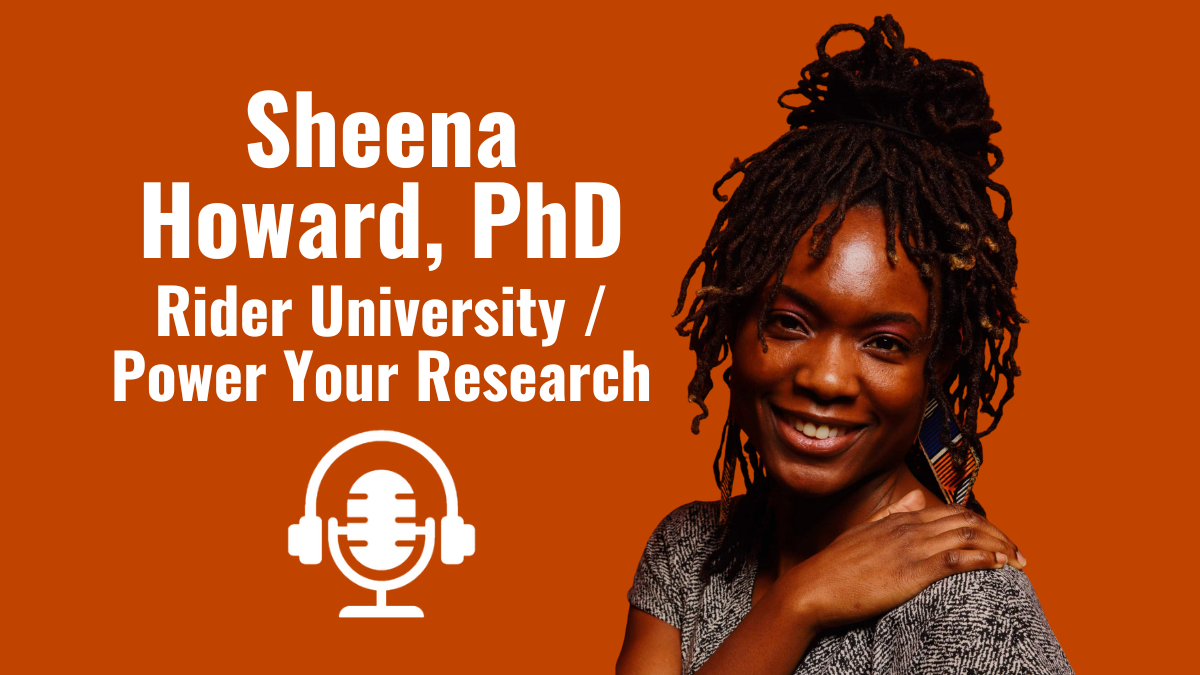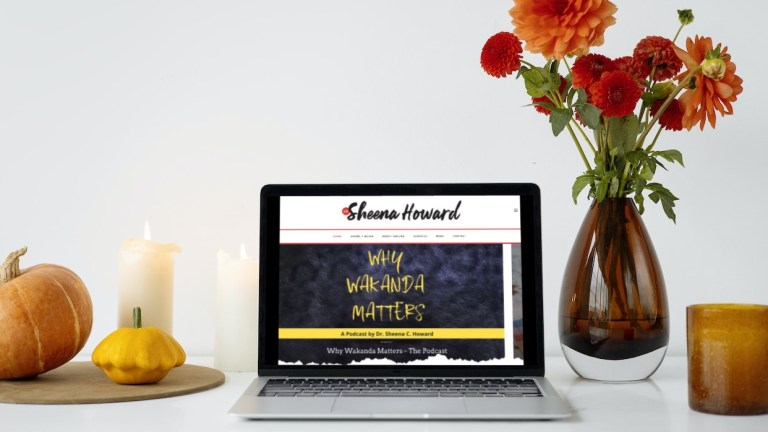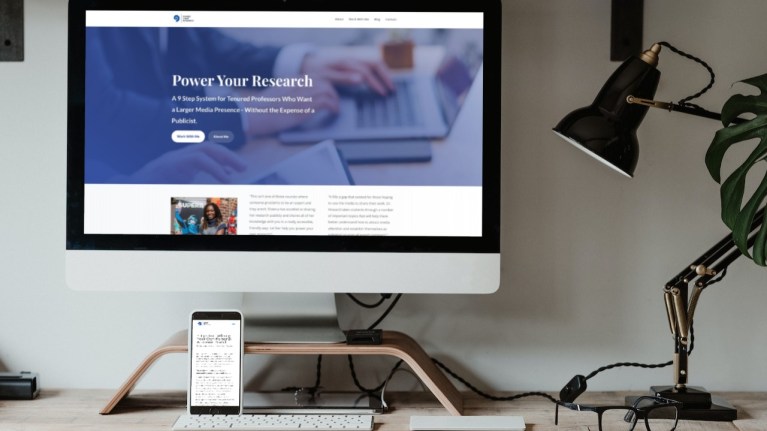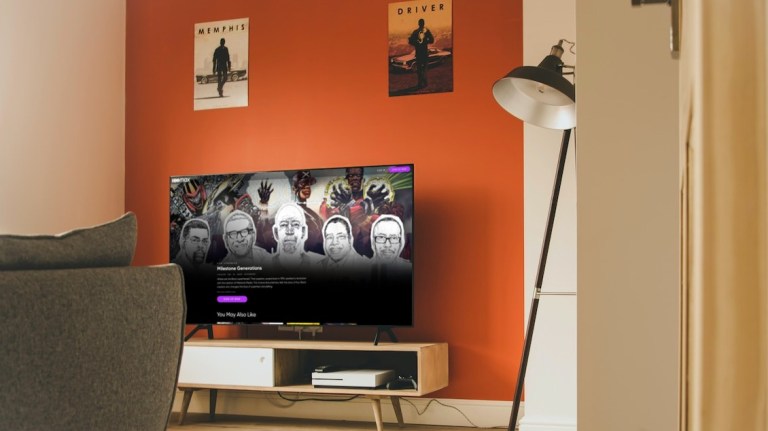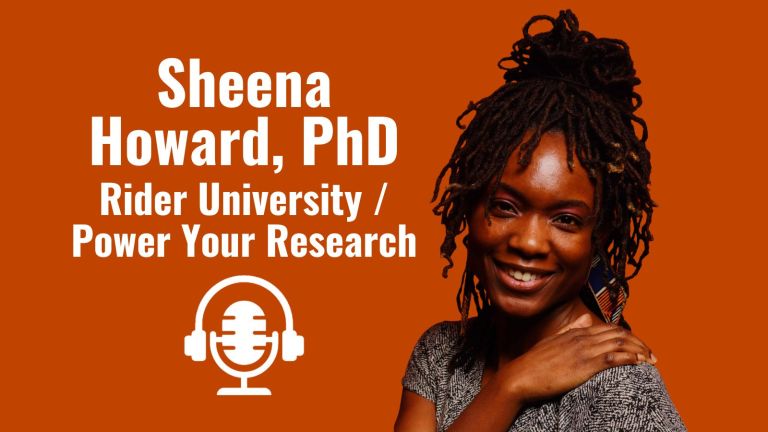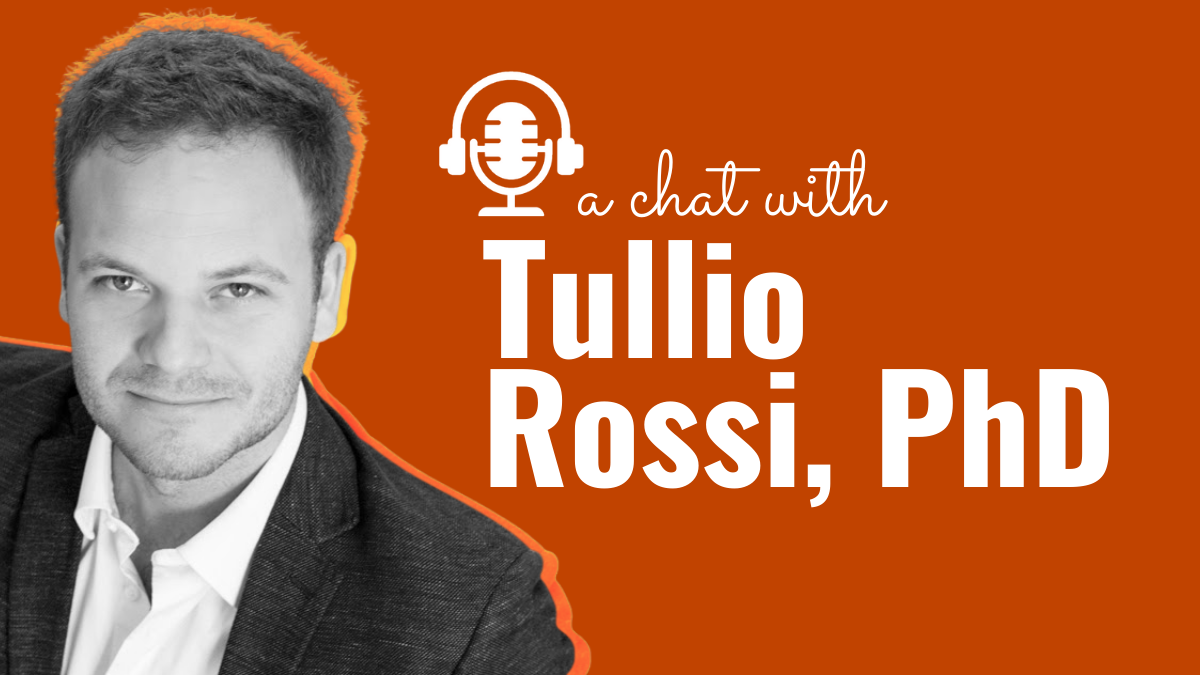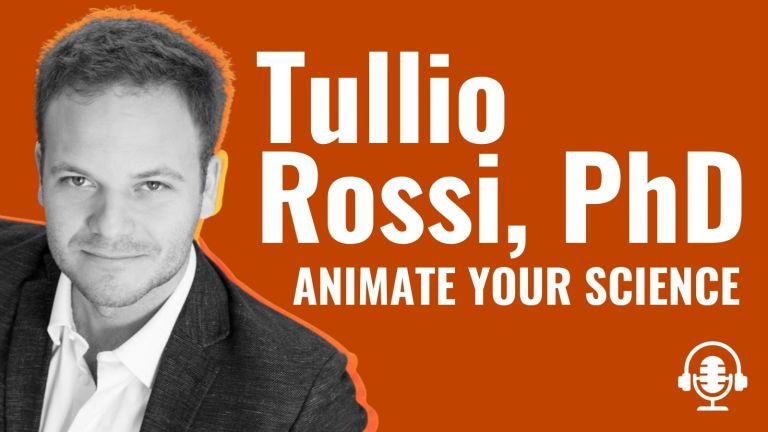When PhD student, Cate Adamson finds an unknown painting in her university’s basement, she journeys to Spain to uncover the mystery. An impoverished duke, misogynist advisor, and intrigue in the archives. Attribution is the perfect gift for the academic in your life!
Linda Moore, author of Attribution, joins me in this featured interview. We talk about her book and how to get comfortable talking about your book too.
I’ve you’ve ever felt anxious about talking about your book, this is a great interview for you!
Start with this short video, that goes behind-the-scenes on women’s experiences in the academy. This video is fire, please share it with your friends.
Subscribe to The Social Academic blog.
The form above subscribes you to new posts published on The Social Academic blog.
Want emails from Jennifer about building your online presence? Subscribe to her email list.
Looking for the podcast? Subscribe on Spotify.
Prefer to watch videos? Subscribe on YouTube.
Meet Linda Moore
Listen to How to Talk About Your Book with Author of Attribution Linda Moore:
Watch the full video interview, recorded live, on YouTube.
Jennifer: Hello everyone, my name is Jennifer van Alstyne. And welcome to The Social Academic on YouTube. I’m here today with author Linda Moore we’re talking about her amazing book, Attribution, which is about a PhD student named Cate.
Linda, would you mind introducing yourself?
Linda: Hi, everyone. I’m Linda Moore. I spent more than a few years collecting degrees from various universities and I’m so excited to talk to people in the academic community.
Jennifer: Today we’re talking about your book, Attribution, which is on the 2022 Gift Guide for Academics. And I’ve put it on the Gift Guide because it is such a fun story. I think that you’re really going to relate to the protagonist Cate who is a PhD student in art history. Can you tell us a little bit about Cate?
Linda: Cate Adamson is a complex character, young, 23. She’s suffering from the challenges of the drowning death of her younger brother, only sibling, and her blue-collar parents who are back in Michigan. She had to drop out of her program at University of Michigan to do a lot of help around her family’s home. And then finally decided the only way that she could really help them was to move forward and prove to them that a daughter could have a future as well.
She goes off to New York and there she meets her nemesis faculty advisor who won’t approve any of her dissertation topics. And she is assigned to do the ugly job of inventorying the art in the basement of the university. She has found a hidden painting in an old chest that isn’t on the inventory list and decides that it could be a Golden Age masterpiece from about 400 years ago in the era of Philip IV in Spain.
During the holidays, she takes the canvas to Spain and looks for experts. And I’ll leave it there because I don’t want to give off any spoilers about where the book goes.
Jennifer: Cate’s journey is so much fun and her struggles as a graduate student I think are so relatable for the people that are on my blog who are going to read Attribution.
Subscribe to The Social Academic blog.
The form above subscribes you to new posts published on The Social Academic blog.
Want emails from Jennifer about building your online presence? Subscribe to her email list.
Looking for the podcast? Subscribe on Spotify.
Prefer to watch videos? Subscribe on YouTube.
Women in Art
Watch the video interview on YouTube.
Jennifer: When it comes to Cate’s journey and her struggle as a grad student, she’s up against an advisor who isn’t appreciating the research that she is bringing to the table. And she wants to study women.
What is it about women artists that makes Cate’s journey so difficult?
Linda: Well, it’s interesting and shocking actually how little women have been highlighted in the history of art.
The famous Janson History of Art book that we were all assigned in history of Art 101 or even in High School AP History of Art it is still the go-to book. The initial edition had no women artist, none.
I mean we’re talking from cave art days of the Neanderthals to Contemporary Art. It didn’t have Georgia O’Keefe. It didn’t have Mary Cassatt. It didn’t have Frida Kahlo. It took until the 70s when the Women’s Movement was really coming more alive for Janson’s son, who did a rewrite of one of the editions, to begin adding women.
I thought, ‘Okay well that was 50 years ago.’ However, if you look at the collections…
The piece on the cover which is a nude by Velázquez held in The National Gallery of London. And I read that The National Gallery of London only had 15% of its collection was women artists.
Jennifer: Wow.
Linda: And I’m shocked. And I thought, oh well, the Brits. You know, but honestly, The Met in New York has…are you ready? 7% of its collection are women artists.
Jennifer gasps: That’s even worse!
Read this open-access article on Diversity of artists in major U.S. museums.
Linda: Yes. And that’s with a lot of distinguished women being on the board and being in the curatorial staff. So I think there is now a resurgence of a movement to correct these things. And with that is coming a lot of women who are extraordinary like Artemisia Gentileschi who was the artist that we know a lot about because she was raped by her painting tutor in the 1500s in Italy. And that is all that trial was documented in the courts. So we have a lot of information. Many paintings of hers are now being reattributed to her because of the fact that you know people didn’t believe such good works could have been done by a woman so they would attribute them to some contemporary man. She has had numerous exhibitions there’s a lot of exciting work going on to try to rewrite the history of women in art.
Jennifer: I love that it sounds like it really inspired some of the circumstances in your book.
Subscribe to The Social Academic blog.
The form above subscribes you to new posts published on The Social Academic blog.
Want emails from Jennifer about building your online presence? Subscribe to her email list.
Looking for the podcast? Subscribe on Spotify.
Prefer to watch videos? Subscribe on YouTube.
Linda’s love of art
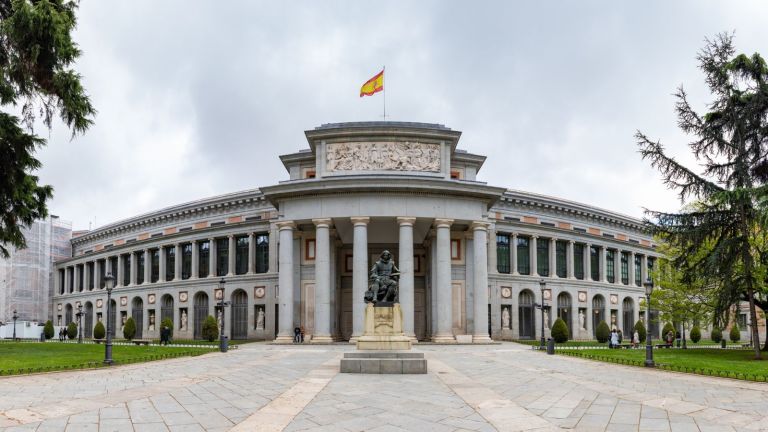
Jennifer: One thing that I really love is that I can tell your passion for art. Tell me a little bit about your background in art.
Linda: Well I am a political science major as an undergraduate with a minor in Spanish and anthropology. I really became excited about art when I went to Madrid with the education abroad program of the University of California. A wonderful program that has grown so much since I was in it and I continue to be a big supporter of that program.
I discovered art. My grandmother was a painter, but the kind of art I was able to see in Europe. To be able to study Spanish art in the Prado, Italian art in the Prado, and see the real paintings, not slides in the darkened lecture hall. I was just blown away, very excited.
I never stopped loving art. I spent some time in other careers, became a hospital administrator, did different things. And then decided that I really wanted to open an art gallery. I focused my art gallery on the art of the southern cone of South America, not something we see very much in California, or even in the United States.
I was inspired by that because I’d gotten my master’s degree from Stanford and Latin American studies with a specialization in politics. But I realized I could teach a lot more about Latin America and what was going on through the artist’s eyes from that part of the world. I can remember even the days where I had to bring a map of South America to the gallery and share with the staff where was Uruguay, even Argentina. I mean our knowledge of the geography of South America is quite bad.
Jennifer: I understand. I’m from Peru and people ask me where that is all the time.
Linda: Oh yeah, and politics of Peru right now…we could have a whole conversation about that.
Jennifer: Yes, absolutely.
Linda: But in any case I really enjoyed the way that art, and being involved with the artists, and understanding their world, their history, their current challenges…that art embodies all of it. And I enjoy that so much. I was always learning. Still, always learning all the time in so many areas.
Subscribe to The Social Academic blog.
The form above subscribes you to new posts published on The Social Academic blog.
Want emails from Jennifer about building your online presence? Subscribe to her email list.
Looking for the podcast? Subscribe on Spotify.
Prefer to watch videos? Subscribe on YouTube.
Getting comfortable talking about your book

Jennifer: Well, the first time we met was at an art show. You told me pretty immediately about Attribution. It was maybe the first time that an author had been so open and so generous with the creation that they had made. I loved it and I was so excited to read it.
I heard about Cate’s journey and I was like I’m gonna read that book. And Attribution really did touch me. You’re so comfortable talking about your book that when I saw you again at Warwick’s for your reading I was like ‘Oh my gosh, not only is she comfortable talking about her book in person, she’s letting people know that she’s sharing it on Instagram in Reels, on social media.’ That is difficult for so many people. It’s scary and anxiety provoking.
What’s it like to talk about your book?
Linda: Having been an art gallery owner, it was quite easy for me to talk about other people’s art. I’m for the first time talking about my own art, right? So there it is [Linda holds up the book]. I have it, you know, all over the place here. That’s marketing 101. Let people remember the name of the book, Attribution.
I finally had a talk with myself and I said, “Okay, if you were making the most fabulous chocolate chip cookies in the world. And people raved about them and told you how good they were, you would have no trouble at all saying, ‘Jen have some of my chocolate chip cookies they’re really really good.’ And that feels quite natural to say right?”
I convinced myself I worked really hard on this book for a long time, and I worked to make sure that backs were correct, that every single word was spelled right. I’m sure there are still a few errors but we sure made an effort. And the cover, everything about it. I felt it was a competent quality book, just like my chocolate chip cookies.
And I would say, “Please try my book, I think I’m offering you something you’ll enjoy, something I’m proud of.” And I always end with saying, “Let me know what you think, because I am interested to hear from readers.” And hopefully the next book will be even better.
But I can’t say that there aren’t moments when I think the other person must be thinking, “Oh my god, there she goes about that book again.”
[Jennifer laughs.]
Linda: So I try to at least moderate a bit who my audience is and hold back so I don’t end up losing all my invitations.
[Jennifer laughs:] Oh, thank you for saying that too. Because you know, I think people are anxious about having that reaction. And you’re someone who’s doing this quite often. You are talking about your book. You are being open about it. And people aren’t snubbing you. People aren’t like, “Oh my gosh, there’s Linda, let me run the other way.” No.
They’re talking about your book. They’re at your readings. They’re helping share it with their friends. And I think that that is something that the power of connection can really create.
I just want to share some comments with you from the live chat: “Have some of my chocolate chip cookies, yes, I love it.”
Attribution is on the 2022 Gift Guide for Academics. We do recommend that you buy it for yourself, buy another copy for a friend. Honestly, I loved reading this book. So I highly recommend it.
Linda: Well it is easy to talk about something that you personally enjoyed.
Inviting conversation about your book
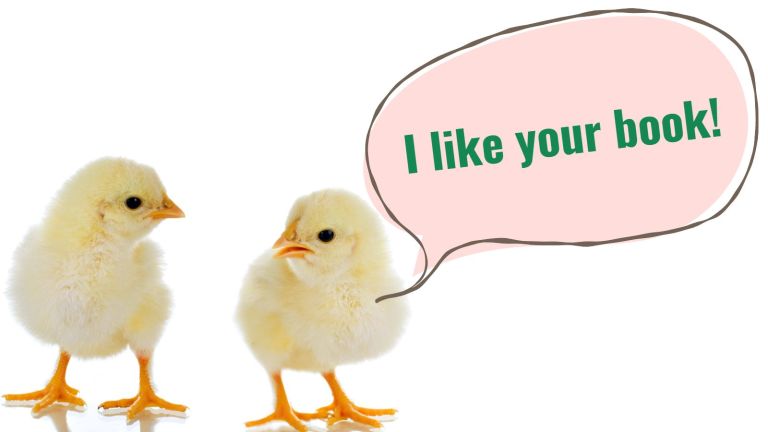
Linda: I love really to hear other people talk about [the book], which you can only make that happen by first talking about it yourself.
I went to quite a few little presentations about marketing books. And you know this whole world was all new learning for me. I learned that in spite of all the social media, and all the things, which I know Jen you’re very dedicated to it. And I too am. Is that still, word of mouth is that big source of how people find their way to a book.
But how do you get word of mouth going? I mean you can only know the hundred people on my Christmas card list, right? That’s easy to get to. All that you know my relatives, and their neighbors. And you know but ultimately your circle kind of starts to slow down because we can only all know so many people personally. To begin to reach beyond that does mean to keep the conversation going.
I do think of it like a conversation instead of a sales pitch, because you know for some people my book is not right. It’s not their thing. And I’ve spent more than a few sessions in Barnes and Nobles and other bookstores, and the first question I ask people is, “Do you read novels?”
And if they say, “No, actually I read biographies of sports figures,” I go okay. And then I might convert to a conversation of who their favorite team of this or that is, because I don’t think they’re probably going to be a reader for my book. But sometimes, and I used to say this in the gallery, “If you can’t make a sale, make a friend.” So, I try to make a friend. Then I might find out that his sister would really enjoy the book, but maybe he wouldn’t.
Jennifer: Exactly.
Linda: Word of mouth is ultimately there, but it all begins with putting yourself out there in a variety of ways, including social media. And physically showing up, and being willing to to raise your flag and say, “Hey, I’m an author.”
Subscribe to The Social Academic blog.
The form above subscribes you to new posts published on The Social Academic blog.
Want emails from Jennifer about building your online presence? Subscribe to her email list.
Looking for the podcast? Subscribe on Spotify.
Prefer to watch videos? Subscribe on YouTube.
Talking about your book on social media
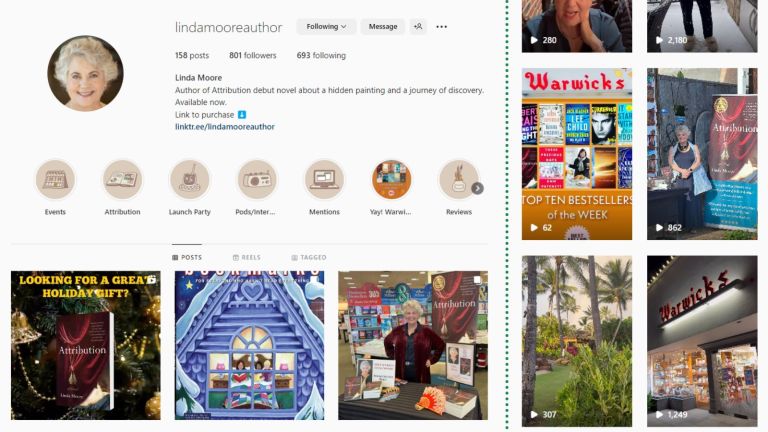
Jennifer: Tell me a little bit more about social media. I know that you’re on Instagram and Facebook. Tell me about why you decided to join social media.
Linda: I was already on social media, mostly Facebook, a little bit Instagram. I had a Twitter account which now…
No one look for me on Twitter because, “I’m sorry Elon, I am not a friend or a fan in any way.”
I don’t want to be part of something that, I don’t know if I even have a word for it but it certainly isn’t a dialogue with people. And it’s not it’s not my world.
I will say Facebook we love to love it and hate it all at the same time. I know a lot of people have left, but I initially got on there and was traveling a lot before COVID over the last 10 years.
Facebook is such a great way to share with people: here’s where I am, here’s you know what I’m looking at this morning in some beautiful place. And a reminder of all these people’s birthdays and things I would never in a million years remember that. Just to reach out to friends. It takes so little effort to do it, that I really do appreciate it.
I have found great joy and looking at my friend’s grandkids photos and where they’re traveling. And learning about what they’re reading, sometimes I find my way to really interesting stories.
Since I’ve been writing stories on my Linda Moore Author page, and Facebook, and Instagram, about these women artists who’ve been forgotten. I post pictures of paintings that are in the book. And also photos of places in the book. But it leads to a lot of interesting conversations. Especially during COVID, when we were also isolated. It was really nice to connect with people in a safe way. And that continues.
I have met just such amazing people. It blows me away when I get a note from New Zealand or somewhere that someone’s read the book. Now how could that happen any other way?
Instagram, the Reels, was not my world. But I will tell you, my daughter-in-law, who had 25,000 followers for, are you ready? For the dog. His name is Ravioli, if you want to be his friend. My daughter-in-law encouraged me to do Reels. And I have had some fun with it. I mean the ones of me doing exercise, which you know gets a lot of attention mostly because I’m so not fit it seems to be a hit.
Linda: It gets attention because they’re so sweet. I went home immediately after your reading when you mentioned your Reel to Eye of the Tiger. I watched it and I was like this should be viral! Everyone should see this Reel, it’s amazing. I loved it.
Linda: Oh good, put it out there, Jen. But it does allow you to share a different dimension of yourself. And it could be you hitting a golf ball and missing five times, I don’t know. But it’s just a way to show that you have many layers.
People suffer from stereotypes of lawyers, and doctors, and professors. And I think that an opportunity to show you with that pet that you love, or with the house you’re trying to renovate, or you know whatever else is going on in your life. Because it makes you relatable as a person, as a human being. Even if you’re teaching students, to share that dimension of yourself I think is a really wonderful way to connect with the world.
Jennifer: Thank you for sharing that. Just from the live comments, Dr. Jennifer Polk says, “I appreciate Linda sharing about having fun taking risks on social media. I’ve not done that so much. Reels scare me.” I think that’s true for so many people.
What was it like asking for some help with Instagram? Your daughter-in-law is helping you with those Reels. Most people are anxious to ask for help or guidance in any way. What was that experience like for you?
Linda: Well, I would say in general about everything in your life, nobody knows everything. So asking for help is a very human quality whether it’s you know making those chocolate chip cookies, or ending up trying to figure out how the heck do I do a Reel? And my daughter-in-law will tell you that I am not a good student of Instagram.
I’m still trying to figure it out. I had not wanted to ask her because I knew she was really good at it. And just like you were saying, I was reluctant because it seems like an imposition. But she came to me. We struck a deal where she wanted some of my airline miles that had piled up when I went nowhere during COVID, to go to a friend’s wedding. I traded her miles for making me Reels.
Jennifer: I love it.
Linda: Then she decided she wanted to go with me on some of these book tours to Seattle, and other places. It was really fun to have her along, and be partners in this. She was doing some of the filming so I learned more of her artistic approach to production of these things.
Now I do a few little videos of my own and I’ll send them to her. You can take a look at those. I don’t think they’re Academy Award-quality, frankly. She does a great job especially. The ones I do are not nearly as good…She’s taught me a lot.
But you know what? There’s a lot out there where you can learn. You can just Google it. You don’t have to necessarily put yourself in front of people. But for people who are close to young people, to make a friend and maybe offer something in order to get some help. I think that young people are very happy to help.
The guy who cuts my hair taught me how to do the first Reel I ever did.
Jennifer: Really?
Linda: Yeah, it’s on there. You can see him, he’s trying to do my hair and he says behind me, I’m filming right? And he says behind me, “Oh, we’re gonna need a miracle here.”
And I go, “Oh no!” It’s so simple really. All I had to do was hold the camera.
I think that it’s also great to connect with young people. I envy faculty and others who have the opportunity to be around young people as they get older. And to understand their world and make yourself vulnerable to be the one that’s the student and they’re the teacher and change roles. I think that’s healthy. If that’s a motivator of why you might want to do this to understand their world better. I think that’s maybe an easy call.
Jennifer: Attribution is such a fun read. I encourage you to pick up a copy of Attribution by author Linda Moore. It’s on the 2022 Gift Guide for Academics because it’s about a PhD student named Cate who really has a journey to find herself, to find her power, to find what she wants for the world. I just loved this book and I know that you are going to love it too.
Subscribe to The Social Academic blog.
The form above subscribes you to new posts published on The Social Academic blog.
Want emails from Jennifer about building your online presence? Subscribe to her email list.
Looking for the podcast? Subscribe on Spotify.
Prefer to watch videos? Subscribe on YouTube.
Podcast and radio interviews made Linda anxious
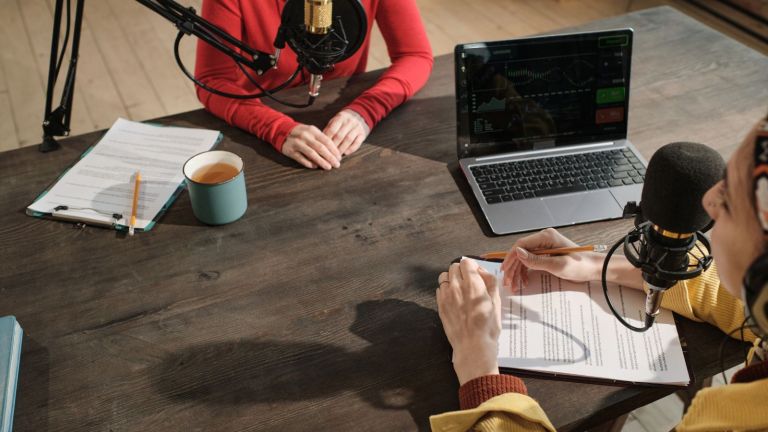
Jennifer: Linda, tell me have you had any struggles or anxieties yourself about marketing the book? I mean it sounds like Instagram was something that was new to you but it sounds like you really approached it with some fun. Was there something that you did struggle with though?
Linda: Well I think like this kind of thing, Jennifer, doing podcasts and radio interviews are even more difficult. Because I’m a visual person. An interview is kind of almost more anxiety.
Jennifer: Oh, that’s interesting.
Linda: Now I’ve sort of been through the trial by fire learning method. I have learned a few things. Number one, don’t be boring. That goes for Instagram and Facebook and all of that.
Try to find something interesting. If you’re not educating, then entertain, or both. Both is best, where people can learn something but it’s also extremely entertaining and enjoyable. Because no one goes there because they have to. I think that most important to just be yourself. Like you’re sitting with a conversation and try to just like we’re having coffee, Jen. And not worry.
I was on a panel recently at a bookstore Book Passage in the Bay Area. The moderator had sent us some questions ahead, like we might have questions like this. But I’ve done enough of these to know that nothing ever goes like the plan, right? So you have to be flexible.
There was another panelist, this is a super Highly Educated person, and she had written out all the answers to her questions. She was ready to read them like it was a lecture or presentation. I explained to her that I thought it would not necessarily go that way. She couldn’t depend on her answers. I could see that was a real change in her thinking. Because in the moment, she would be frustrated that she wasn’t getting through the assignment, right? But there is no assignment. It’s a conversation that needs to be very flexible if it’s going to be real and authentic.
Jennifer: So being adaptable. And it sounds like you can prepare, but you can’t prepare for everything. And being able to have that conversation and be interested in the spontaneity that the conversation might go in is really important.
Linda: Absolutely.
Subscribe to The Social Academic blog.
The form above subscribes you to new posts published on The Social Academic blog.
Want emails from Jennifer about building your online presence? Subscribe to her email list.
Looking for the podcast? Subscribe on Spotify.
Prefer to watch videos? Subscribe on YouTube.
Attribution by Linda Moore
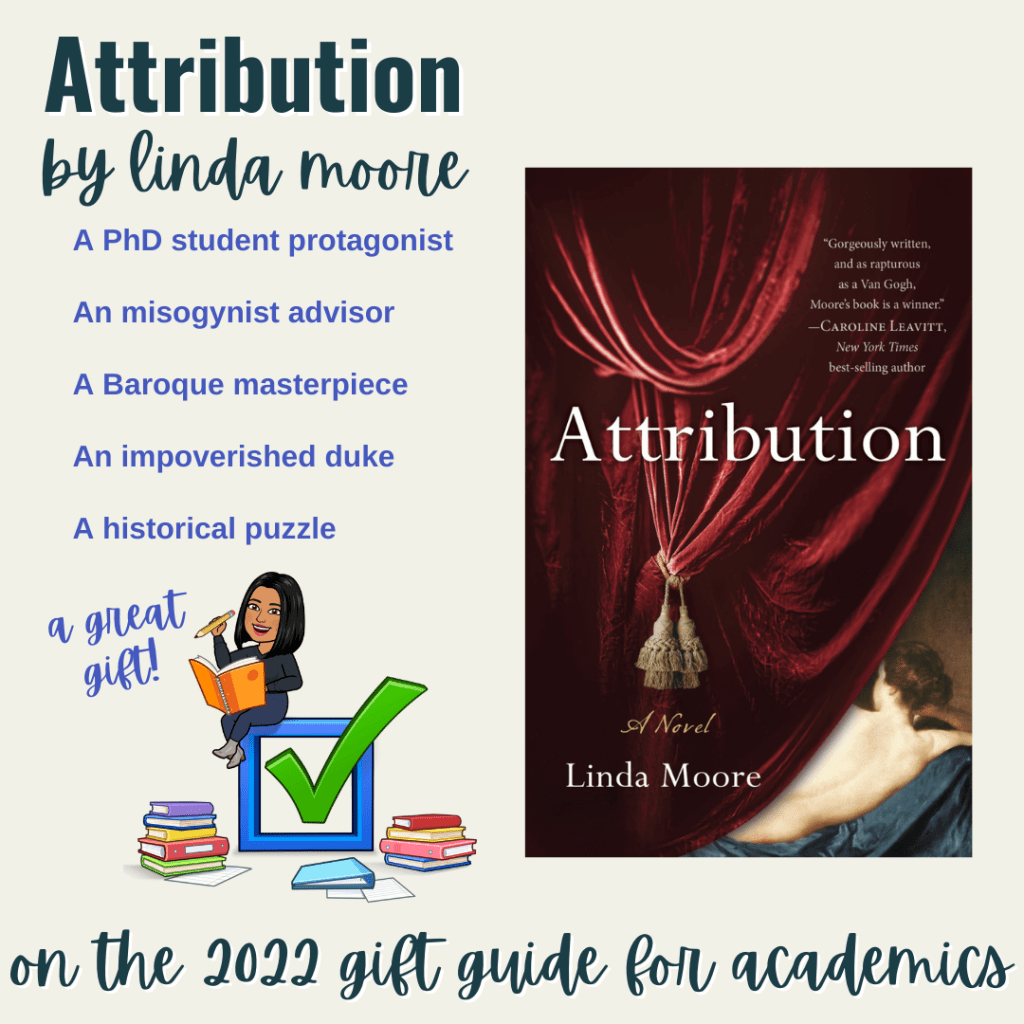
Jennifer: Well thank you Linda, so much for coming on and telling us more about what your approach to book marketing is. And how you really are connecting with people, individual people, to help share your book. I think that it makes such a difference.
I could see the passion of the people who were in your audience at Warwick’s book shop here in Southern California. They were really interested not only in what you were saying, but why you were saying it. I think that your story and Cate’s story in Attribution, which is again on the 2022 Gift Guide for Academics, pick up a copy…is so interesting. It’s something that people find memorable.
Linda: Thank you, Jen. Also let me say to those reading, you can reach me on my website. And please, email me. I answer all the emails. If you have a particular question or something that we didn’t touch on that would interest you, I’m very happy to hear from you by email.
Jennifer: Thank you so much for reading! Linda, thank you so much for joining me.
Our last interview of the year goes live next week. Don’t miss it.
Subscribe to The Social Academic blog.
The form above subscribes you to new posts published on The Social Academic blog.
Want emails from Jennifer about building your online presence? Subscribe to her email list.
Looking for the podcast? Subscribe on Spotify.
Prefer to watch videos? Subscribe on YouTube.
Bio for Linda Moore
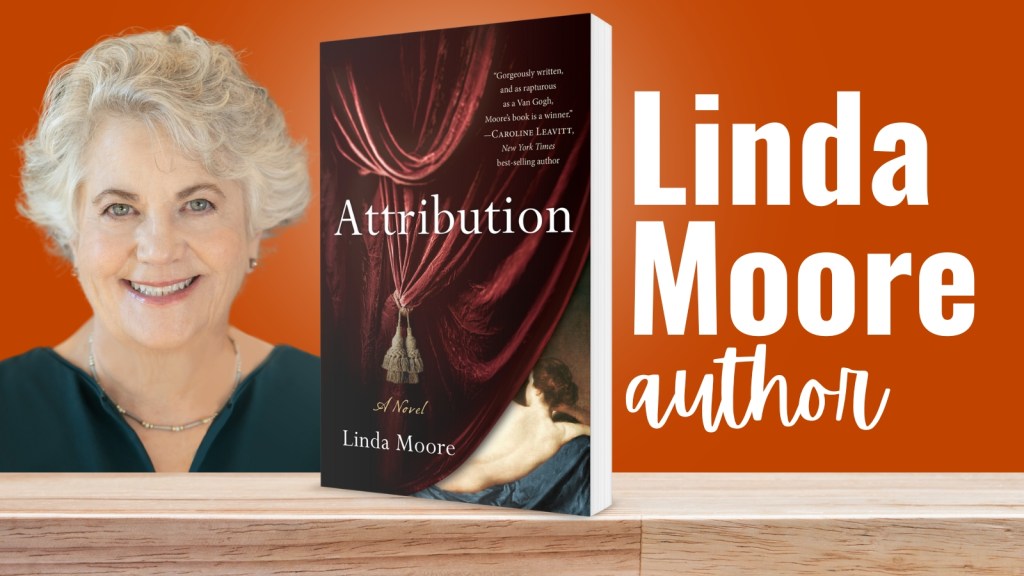
Linda Moore is an author, traveler, and a recovering gallery owner. She studied art history at the Prado while a student at the University of Madrid and earned degrees from the University of California and Stanford. Her gallery featured contemporary artists and she has published award-winning exhibition catalogs. Her writing has appeared in art journals and anthologies. She has looked at art on all continents and visited over 100 countries She resides with her book-collecting husband in California. Her debut novel Attribution about an art historian who finds a hidden masterpiece, is available wherever books are sold.
Check out the 2022 Gift Guide for Academics.
Instagram Interviews Share Your Research Social Media How To’s The Social Academic

